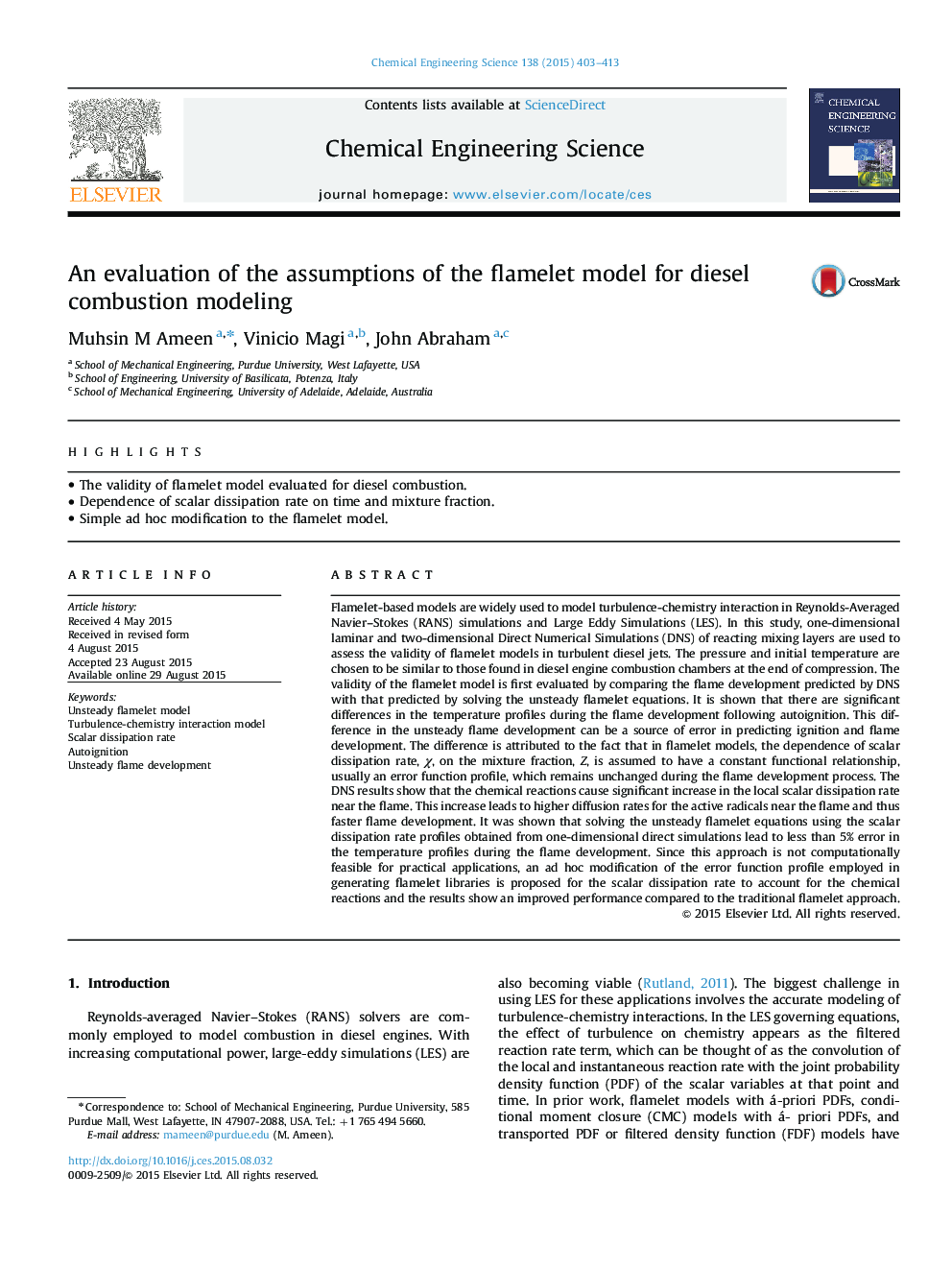| کد مقاله | کد نشریه | سال انتشار | مقاله انگلیسی | نسخه تمام متن |
|---|---|---|---|---|
| 154613 | 456846 | 2015 | 11 صفحه PDF | دانلود رایگان |
• The validity of flamelet model evaluated for diesel combustion.
• Dependence of scalar dissipation rate on time and mixture fraction.
• Simple ad hoc modification to the flamelet model.
Flamelet-based models are widely used to model turbulence-chemistry interaction in Reynolds-Averaged Navier–Stokes (RANS) simulations and Large Eddy Simulations (LES). In this study, one-dimensional laminar and two-dimensional Direct Numerical Simulations (DNS) of reacting mixing layers are used to assess the validity of flamelet models in turbulent diesel jets. The pressure and initial temperature are chosen to be similar to those found in diesel engine combustion chambers at the end of compression. The validity of the flamelet model is first evaluated by comparing the flame development predicted by DNS with that predicted by solving the unsteady flamelet equations. It is shown that there are significant differences in the temperature profiles during the flame development following autoignition. This difference in the unsteady flame development can be a source of error in predicting ignition and flame development. The difference is attributed to the fact that in flamelet models, the dependence of scalar dissipation rate, χ, on the mixture fraction, Z, is assumed to have a constant functional relationship, usually an error function profile, which remains unchanged during the flame development process. The DNS results show that the chemical reactions cause significant increase in the local scalar dissipation rate near the flame. This increase leads to higher diffusion rates for the active radicals near the flame and thus faster flame development. It was shown that solving the unsteady flamelet equations using the scalar dissipation rate profiles obtained from one-dimensional direct simulations lead to less than 5% error in the temperature profiles during the flame development. Since this approach is not computationally feasible for practical applications, an ad hoc modification of the error function profile employed in generating flamelet libraries is proposed for the scalar dissipation rate to account for the chemical reactions and the results show an improved performance compared to the traditional flamelet approach.
Journal: Chemical Engineering Science - Volume 138, 22 December 2015, Pages 403–413
